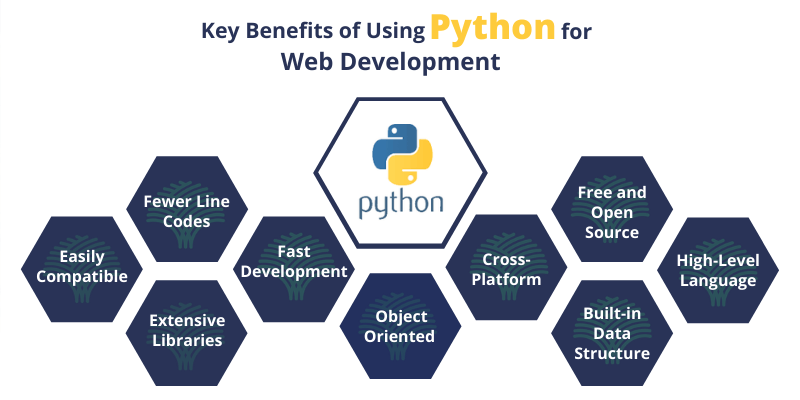Python is the world’s third most popular programming language in February 2021, according to TIOBE’s index. It grew over 1.52% since January. Its massive demand in the past few years is a result of its diverse applications. Python is now widely in use for Machine Learning, Data Science, Neural Networking, and more. Today, Python for web development is increasing as companies look forward to advanced applications that can fulfill enterprise-grade requirements.
Stats/Code/ML/AI
Python is the world’s third most popular programming language in February 2021, according to TIOBE’s index. It grew over 1.52% since January. Its massive demand in the past few years is a result of its diverse applications. Python is now widely in use for Machine Learning, Data Science, Neural Networking, and more. Today, Python for web development is increasing as companies look forward to advanced applications that can fulfill enterprise-grade requirements.
The AI industry is playing a dangerous game right now in its embrace of a new generation of citizen developers. On the one hand, AI solution providers, consultants, and others are talking a good talk around “responsible AI.” But they’re also encouraging a new generation of nontraditional developers to build deep learning, machine learning, natural language processing, and other intelligence into practically everything.
With the upcoming Tableau 2021.1 release, we’re delivering the first integration of Salesforce’s artificial intelligence (AI) and machine learning (ML) capabilities in Tableau. This introduces an exciting new class of AI-powered analytics: Tableau Business Science. We’re bringing powerful data science techniques closer to the business, beginning with Einstein Discovery in Tableau. Users across the organization are now enabled with powerful predictions and recommendations to make smarter decisions faster. There are three ways to leverage the core ML technology of Einstein Discovery in Tableau—all with no coding required:
This article was published as a part of the Data Science Blogathon. Introduction This article assumes that you possess a basic knowledge of Python
We frequently use the term Probability but don’t realize how powerful this concept is. In simple terms, the probability is the ... The post Axioms of...
What's the best way to learn Python? It doesn't have to feel like scaling a cliff! Python is an important programming language to know — it's widely-used in fields like data science, web development, software engineering, game development, automation. But what's the best way to learn Python? That can be difficult and painful to figure out. I know that from experience.
A significant portion of social media content uses Algorithmic Filtering (AF). AF results in issues with fake news, polarizing opinions. A tweak to AF may be the solution for improving the user experience. According to a recent Pew Research Center Study, 53% of U.S. Adults get their news regularly from social…
It is almost universally accepted throughout the business world that artificial intelligence (AI) will transform things. A PWC survey confirmed as much, with 85 percent of CEOs feeling AI will “significantly” alter how they do business in the next five years. In B2B pricing, the challenges AI can address for the CEO are..
Explainable AI can help build trustworthy AI Artificial intelligence (AI) technology keeps on progressing significantly and is rapidly turning into a potential disruptor and fundamental empowering agent for practically every. The post How do we create Trustworthy AI with AI Ethics and Transparency? appeared first on Analytics Insight.
Level up your data-model developing and power game-changing analytics with Jinja.
In this special guest feature, Kyle Dardashti, CEO & Founder of Heali, discusses how machine learning and data science bring exciting potential to the world of personalized nutrition. Combining these two technologies together on a cohesive platform that supports continuous tracking would allow for real-time validated nutrition recommendations tailored to an individual’s lifestyle.
Machine learning model performance often improves with dataset size for predictive modeling. This depends on the specific datasets and on the choice of model, although it often means that using more data can result in better performance and that discoveries made using smaller datasets to estimate model performance often scale to using larger datasets.
With so many organizations now taking the leap into building production-level machine learning models, many lessons learned are coming to light about the supporting infrastructure. For a variety of important types of use cases, maintaining a centralized feature store is essential for higher ROI and faster delivery to market. In this review, the current feature store landscape is described, and you can learn how to architect one into your MLOps pipeline.
Simulated Annealing is a stochastic global search optimization algorithm. This means that it makes use of randomness as part of the search process. This makes the algorithm appropriate for nonlinear objective functions where other local search algorithms do not operate well. Like the stochastic hill climbing local search algorithm, it modifies a single solution and […]
To trigger an alert when data breaks, data teams can leverage a tried and true tactic from our friends in software engineering: monitoring and observability. In this article, we walk through how you can create your own data quality monitors for freshness and distribution from scratch using SQL.
The No Free Lunch Theorem is often thrown around in the field of optimization and machine learning, often with little understanding of what it means or implies. The theorem states that all optimization algorithms perform equally well when their performance is averaged across all possible problems. It implies that there is no single best optimization
Stochastic optimization refers to the use of randomness in the objective function or in the optimization algorithm. Challenging optimization algorithms, such as high-dimensional nonlinear objective problems, may contain multiple local optima in which deterministic optimization algorithms may get stuck. Stochastic optimization algorithms provide an alternative approach that permits less optimal local decisions to be made
NoSQL Databases have four distinct types. Key-value stores, document-stores, graph databases, and column-oriented databases. In this article, we’ll explore column-oriented databases, also known simply as “NoSQL columns”.
I’ll admit it: I used to be a regexaphobe. When I was new to analytics, I remember someone sending me a snippet of regular expressions (AKA regex) to solve a goal setup conundrum I was working through. It looked like a foreign language to me. I was fascinated by it but repelled at the same […]
Thanks to the flexibility of the Domo platform, you can create solutions with data that …












